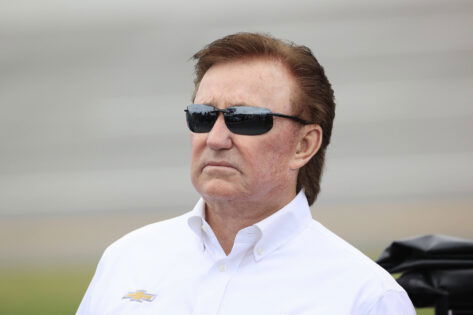Today, Jamie McMurray is known as a FOX broadcaster, but back then, he returned to Chip Ganassi’s 2010 operation after a mixed run at Roush Fenway. That year, Ganassi’s No. 1 Chevrolet produced a career highlight reel, and McMurray won the Daytona 500 and Brickyard 400 among three Cup victories. Recently, McMurray spoke about the special formula that made this possible.
The seasons that followed never matched 2010’s balance. Earnhardt Ganassi Racing’s aero and speed metrics dropped after that year. Their test numbers and wind-tunnel results no longer topped the charts as they had in 2010. McMurray’s points finishes and top results fell back to normal levels in 2011 and 2012. That contrast was one year of exceptional pace surrounded by more ordinary campaigns. These stats make his recent remarks worth noting. He recently admitted that DEI cracked the code in 2010, and explained exactly how.
The reason behind the one-year sweet spot for Jamie McMurray
Earnhardt-Childress Racing Engines (ECR) came from a 2007 partnership between Dale Earnhardt, Inc. and Richard Childress Racing. It became the Chevrolet engine program that many teams relied on in that era. This ECR era is central to why McMurray’s team had superior straight-line speed at fast tracks, and the very same ECR engine helped him win those races in 2010.
In a recent interview with Kevin Harvick, McMurray said that in 2010, “we felt like you had the best engine package.” He also credited Ganassi’s aero edge as he remembered that after wind-tunnel sessions, “our cars are always at the top of that list.” These statements confirm what the results show. The ECR program delivered strong power, and Ganassi’s cars were fast across track types. That year saw marquee wins and consistent top-five finishes. McMurray summed it up: “When you put together the best engine package, the best aero package, and … the team is working well together, it’s just really good.” These are not idle words. They underline how power, aero, and teamwork all pull in the same direction. Richard Childress Racing’s contributions thereby played a big role for McMurray and his team.
Furthermore, McMurray also compared that peak to the seasons after, saying the team “struggled” in 2011 and 2012. The stats back that up. In 2010, he earned three wins, nine top-fives, and a strong pace at fast tracks. In later seasons, Ganassi cars had fewer big results and lower wind-tunnel rankings. This shows how narrow an advantage like ECR plus aero can be. A well-matched engine affects everything. It can change qualifying, race strategy, and defending track position.
Earnhardt Ganassi Racing never repeated that mix in 2011 or 2012. Engine changes and shifting priorities proved how temporary such an edge can be. McMurray later moved into TV, joining FOX as an analyst. From that seat, he still calls 2010 the year when engine, aero, and team clicked in rare harmony. His reflection is a reminder that great seasons often depend on delicate partnerships, not one secret.
How Jamie found a new team in TV
Jamie McMurray began appearing on Fox shows as a guest analyst before he took a full-time TV role. FOX confirmed he joined its NASCAR broadcast team as an analyst for the 2019 season. He first worked on NASCAR Race Hub and NASCAR RaceDay. This is where producers paired him with established studio talent. Those early appearances let him learn the craft while staying close to the sport he knows best.
McMurray has said those Race Hub sessions felt familiar because they mirrored a race-team environment. He told reporters that TV had a team atmosphere. “Everyone has their role, everyone’s working toward the same goal, and there’s a lot of energy.” He also noted the biggest difference was the stress level, and he found that attractive. That setup drew him in and helped him decide to pursue broadcasting in the long term.
“When I first started doing TV, I went on NASCAR Race Hub a few times, and I really enjoyed being around those guys,” McMurray said. He explained that the studio felt like “being on a really good race team.” He added that the lower stress made the work sustainable. “The biggest difference is the stress level. It’s nothing compared to driving a race car. But you still get that team atmosphere, and I liked that right away.” Those lines show why a driver used to high pressure embraced life in the booth.
McMurray moved from guest slots to full duties with Fox and then expanded his on-air roles. FOX placed him across pre-race and in-race studio coverage. He has since called Xfinity and covered Truck races from the booth. Journalists and profile pieces note that he adapted quickly and began producing explanatory content. He produced short segments that break down drafting and aerodynamics for viewers. That growth proves his line about enjoying the team feel, which television rewarded, the same clear communication and collaboration that wins races.
The post FOX Broadcaster Forever Indebted to Richard Childress & Co for Career Defining Season appeared first on EssentiallySports.
